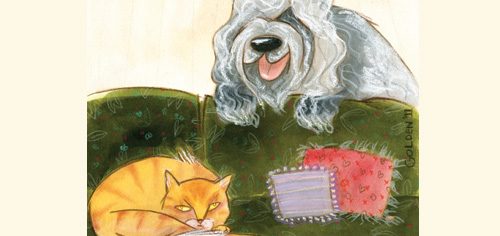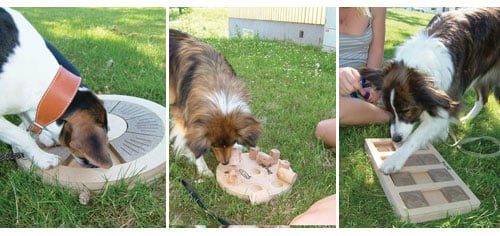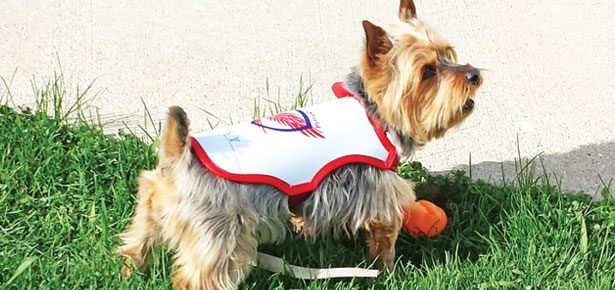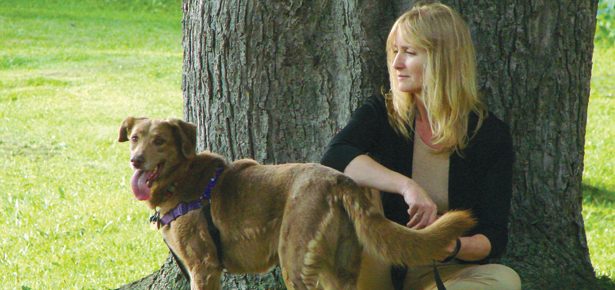

Friends or Foes
How to keep the peace in a cat/dog household
The Hatfields and the McCoys. Rome and Carthage. The Capulets and the Montagues. Enemies all, never to know a moment’s peace. To that list, history must certainly add cats and dogs.
Or must it? Just what is it about this infamous rivalry that fuels such antagonism?
Time and evolution, it would seem. Cats and dogs weren’t always separate creatures; they emerged out of the dim past, over 40 million years ago, from prototypical carnivores known as miacids, who eventually split into felids and canids, or the branches of the evolutionary tree we now recognize as cats and dogs.
It was this biological split that began the age-old rivalry. But long ago, they were not separate; they were one. Perhaps, with help from us, they can be again, at least beneath the safety of our roofs.
Some of us dog lovers are “ambidextrous” when it comes to cat fancy. I know I am; I enjoy a cat’s friendly head butts, leg-slinks, gentle pawings, and its close connection to nature, as if it kept three paws here with us, and one still in the wild. But for many of us, our love for dogs plus our fear of conflict and potential injury has prevented us from following through on this latent cat fancy. And the truth is, cats run, and dogs chase; this reality has stoked the stereotype for millennia.
It needn’t be so. Many pet-loving homes enjoy the canine and the feline experience, the pets finding their respective places, and even enjoying each other’s company. So then, what’s the secret to this inter-species peace?
Planning, patience, and luck, it would seem. The successful dog/cat home is a well-thought-out place, with an owner who understands both pets equally well, and who provides them with space, attention, guidance, and training.
THE PERFECT MATCH
The ideal way to begin a dog/cat love affair is to start afresh, with a puppy and kitten of similar age growing up together, oblivious to their infamous heritage. Though breed isn’t crucial, the relationship might fare better if the dog selected stays on the smaller side and has the potential for introspection and focus, rather than a penchant for non-stop roughhousing or predation. Sighthounds, terriers, and Arctic breeds, with their high prey drives toward small animals, can prove more challenging than other dog breeds, though even they can be taught the positives of feline love. The choice of kitten should lean toward outgoing, confident, and swashbuckling: a “doggish” kitten if you will. An abused stray or feral feline wouldn’t be a good choice.
When starting off with a kitten and puppy, territorial restrictions aren’t all that important, though you’ll need to restrict the litter box from the puppy, and make sure respective food dishes are off-limits to both. Luckily, cats have a three-dimensional potential, making it possible to locate their items up high and out of a dog’s reach.
THE RESIDENT PET SCENARIO
Let’s say you already have a cat at home, and you’re considering adding a dog to the family. This is the next best scenario to the kitten/puppy acquisition. Why? Because that teen or adult cat will, in every way, be lord of the manor, the maker of rules, and the arbiter of space and privilege. Your home is really its home. Any dog coming into that space will either bow to that cat’s will, or find itself in an everlasting fight for its life.
Your best bet? Bring a puppy into this cat’s world, and not an adult dog. A puppy will be completely subordinate to an adult cat, with no learned cat aggression, and no sense of dominance. The puppy will quickly learn boundaries from the cat, who will discipline it, school it, and gradually accept it as a childish waif of little threat. The puppy’s age and total lack of status will be its saving grace.
If you do bring a puppy into an adult cat’s home, you must take precautions. First, the cat must be outgoing, confident, and sociable, with no history of aggression with dogs. An indoor/outdoor cat will have a much harder time adjusting to the puppy than will an indoor-only pet, as it has almost certainly experienced some level of canine conflict on the outside, or at least cat-on-cat aggression. Any cat experienced in combat with another animal might not take kindly to even a puppy. You must also take great care that the puppy does not get injured, especially around the eyes, from errant claw swipes.
If bringing in a puppy, consider keeping it in a separate room for the first few days, letting the cat smell but not see it. Next, use a crate for the first real interaction. Place the puppy in a crate (preferably a plastic one with gratings too small for a cat to easily reach through), then open the room door and let the cat in to investigate. Once the initial dramatics are over, carry the puppy around the home with you, letting the cat intermittently smell its rear. Watch the cat’s rapport; if it seems calm and curious, place the puppy down for a minute and give it a go. If not, stay at this stage for a few days, then try it again. Eventually, take the training wheels off and let them have at it. But when you leave, keep them separate until you know they’ll be okay with each other. And, be sure to limit the puppy’s access to the litter box and the cat’s dishes!
THE SWEET OLD DOG SCENARIO
Many of us have older, well-adjusted dogs, with little if any cat experience, or with positive cat experiences somewhere in their past. This is an excellent opportunity to bring in a kitten. Use the same technique as above; keep the kitten in a separate room for a few days (no crate needed), allowing the dog to scent it out. Then open the door and place in the entry a baby gate high enough to keep the dog out. If the kitten is young enough, it won’t leap over the barrier, at least not for a week or two. Monitor the new housemates; see if the dog shows curiosity, and not aggression. Reward the dog when it remains calm and passive in the kitten’s presence. Remember; a timely nip of turkey meat can work wonders.
After a few days, if all goes well, carry the kitten out, and let the dog sniff its rear, then, with the kitten in your lap, let a face-to-face greeting occur. Pet and praise the dog, calmly. Holding the kitten in your lap will help convince the dog that all is well, and that you’re in charge of this most interesting event.
Over time, and as the kitten grows, allow them more and more access, and freedom. Chances are you will have succeeded in bringing Romeo and Juliet together, family histories to the contrary.
ADULTS
By far the toughest matchmaking attempt would be the adult cat with an adult dog. Both have years of experience behind them, some good, some bad. Neither have had, to your knowledge, any positive inter-species history. The chances of aggression and injury for this scenario are high.
Can it be done? Sure—over time, especially if the pets are easygoing and confident, have no history of aggression that you know of, and if the cat hasn’t been a feral, stray, or indoor/outdoor warrior. But it will take patience on your part. The pets will need to be kept separate for a good while; the cat in one large room, the dog in the rest of the home. A week of simple scenting, followed by a full, see-through partition allowing them to see but not touch. Copious amounts of praise and reward to both, if they cooperate.
At this point, you’ll be able to predict any potential for success; if the dog, for instance, erupts into froths of predatory rage, it’s probably not going to work. Likewise, if the cat turns into a mindless warrior, the odds are stacked against you (though the cat won’t be as predatory toward the dog, and could actually find three-dimensional solutions to the issue). If it appears that they are more curious than combative, leave the barrier up for two weeks, and see what happens. If friendship blossoms, have at it.
One caveat; if you succeed in convincing your cat that dogs are its friend, realize that it may try to generalize this to other, less friendly dogs. So as a precaution, limit other dogs’ access to the home territory, for safety’s sake.
With luck, persistence, and the right dog and cat, the peace can be kept, and you’ll be able to enjoy both sides of the carnivorous coin.
Join the newsletter and never miss out on dog content again!
"*" indicates required fields
By clicking the arrow, you agree to our web Terms of Use and Privacy & Cookie Policy. Easy unsubscribe links are provided in every email.





